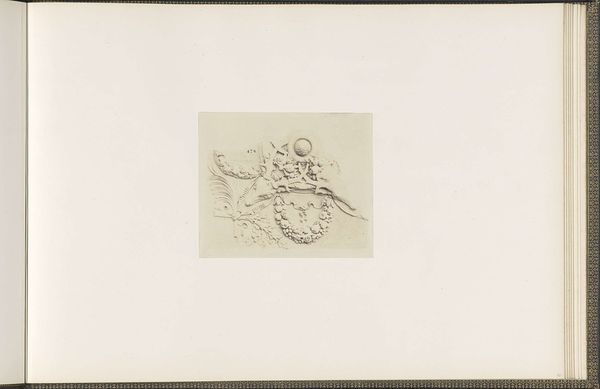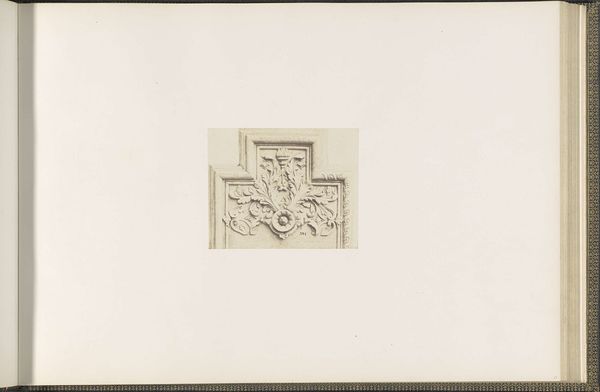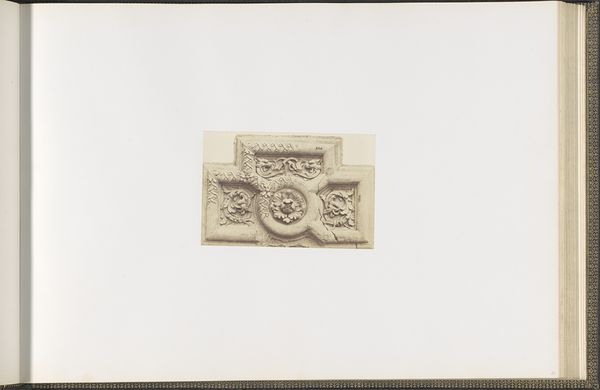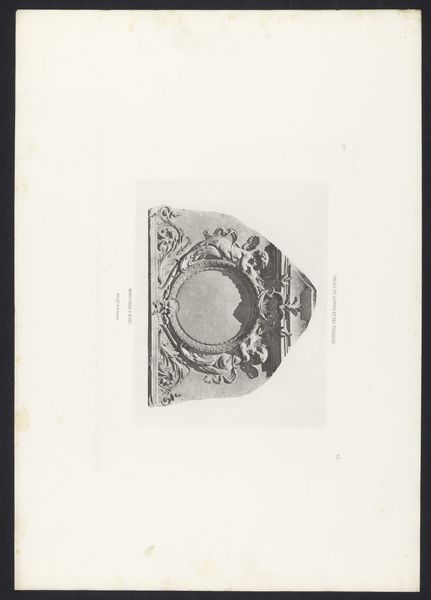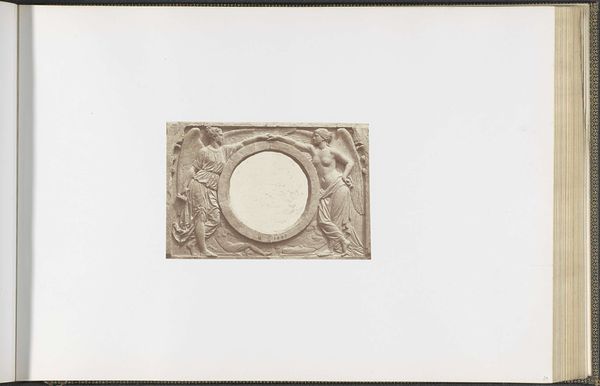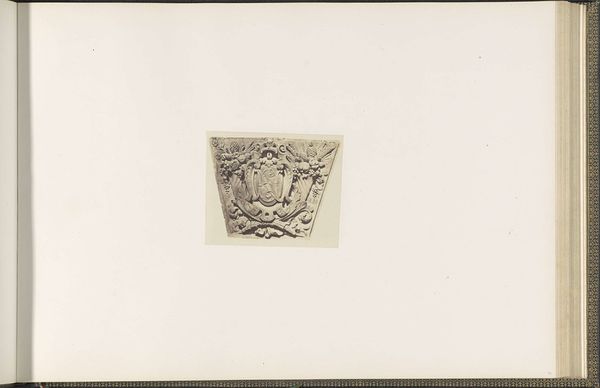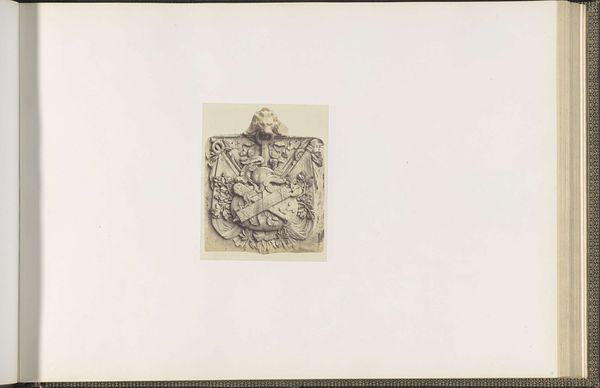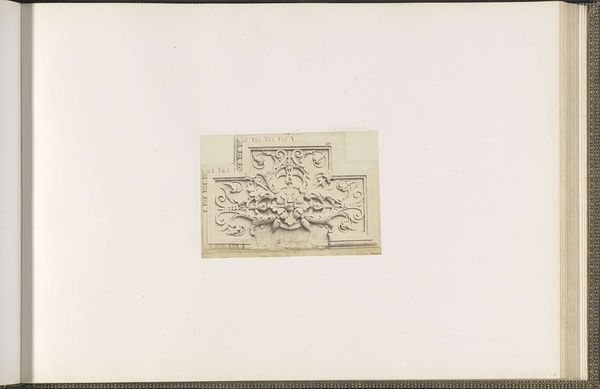
Gipsmodel voor een gewelfversiering van het Palais du Louvre door Pierre Edouard Charrier c. 1855 - 1857
0:00
0:00
edouardbaldus
Rijksmuseum
print, relief, photography, collotype, sculpture
#
portrait
#
neoclassicism
#
ink paper printed
# print
#
relief
#
photography
#
collotype
#
sculpture
#
history-painting
#
academic-art
Dimensions: height 376 mm, width 523 mm
Copyright: Rijks Museum: Open Domain
This photograph, captured by Edouard Baldus, documents a plaster model for the Louvre's vault decorations. Observe the cherubs adorning this piece, a motif echoing classical antiquity. You see, the cherub, initially a symbol of divine love in ancient Greco-Roman art as Eros or Cupid, has undergone a metamorphosis. It reappears in Christian iconography as a symbol of innocence and divine presence. Note how these figures, imbued with an almost unsettling innocence, bear the weight of architectural and historical narratives. Their presence is a palimpsest of cultural memory, layered with meanings accrued over centuries. Consider the persistence of these forms – from pagan temples to Renaissance palaces, and finally, here, in a photograph of a plaster model. This visual lineage speaks to our collective, subconscious desire for beauty, order, and a connection to the past. The emotional power lies in its capacity to evoke a sense of timelessness, engaging us on a profound level. This symbol is not just a decoration but a carrier of cultural memory, continuously reinventing itself through the ages.
Comments
No comments
Be the first to comment and join the conversation on the ultimate creative platform.

